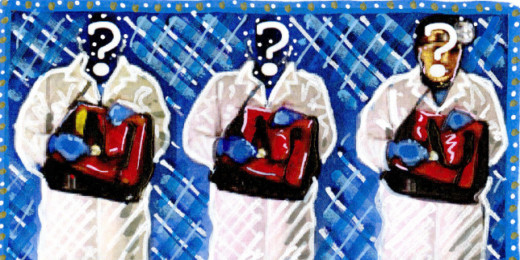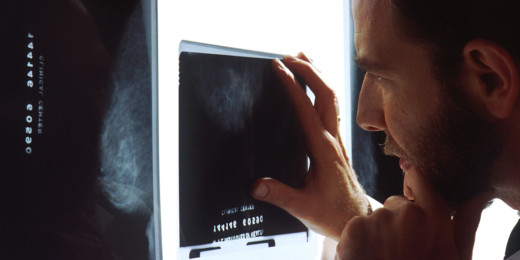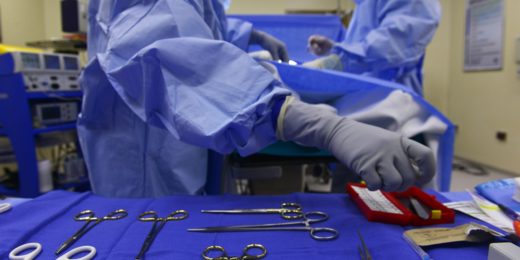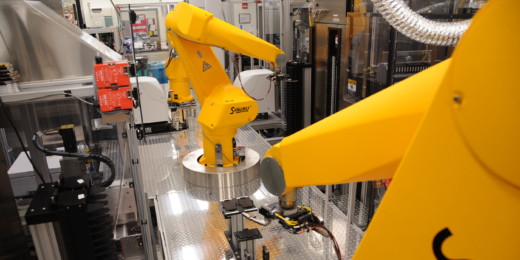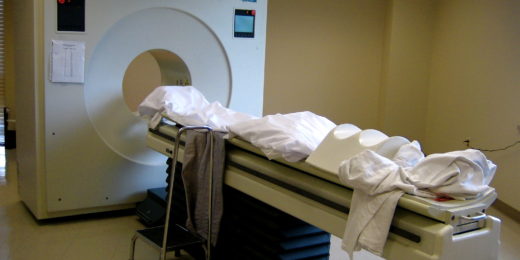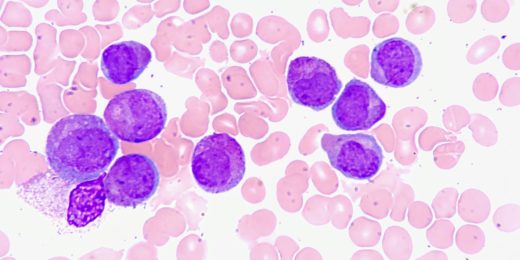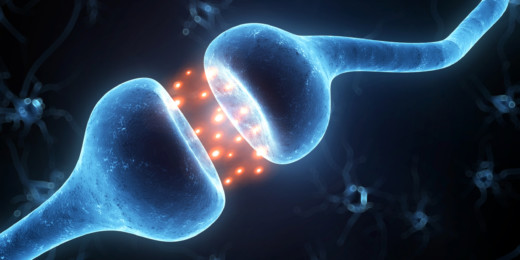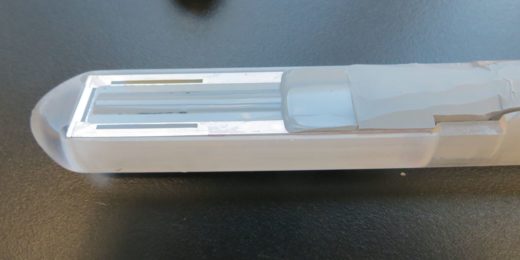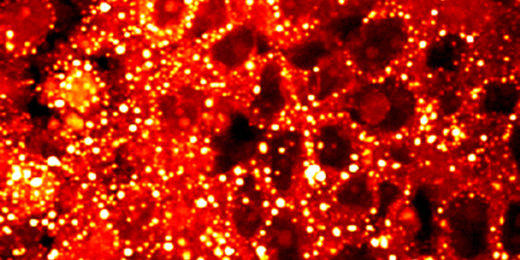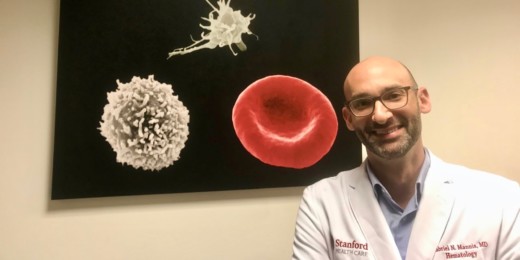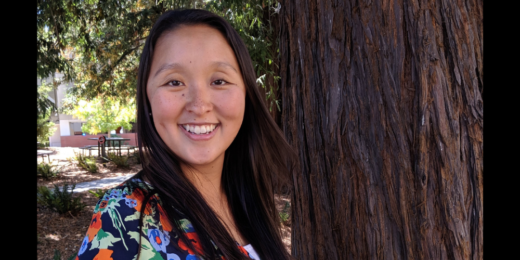A Stanford medical student uses images from pathology to tell a story about the medical ethics of screening for prostate cancer.
Category: Cancer
Close calls: How AI could improve breast tumor diagnosis
In this episode of "The Future of Everything," host Russ Altman and guest Ross Shachter discuss how AI can help radiologists with diagnosis accuracy.
Stanford surgeons innovate new biological breast implants
Surgeon Irene Wapnir and her colleagues developed a new technique for creating biological breast implants for women who have undergone a mastectomy.
Understanding PSA testing: A Q&A
PSA testing is an important tool to spot prostate cancer, but it remains a bit confusing. Stanford urologist James Brooks clarifies some misconceptions.
High-throughput screening IDs drug pair that fights deadly childhood tumor
Screening more than 9,000 pairs of drugs helped Stanford and NIH scientists identify two drugs that synergize against a deadly childhood brain tumor.
Two-for-one PET tracer reveals early signs of pancreatic cancer — and, unexpectedly, lung disease
Scientists at Stanford have developed a new PET scan tracer that flags both pancreatic cancer and a lung disease known as idiopathic pulmonary fibrosis.
Computer models show promise for personalizing chemotherapy
A Stanford biomedical data scientist discusses how computational modeling of big data could help improve personalized chemotherapy selection in the future.
Managing a medical emergency — on a budget: Scope@10,000
As physician Ilana Yurkiewicz writes, it can be challenging to treat a patient with a hematological emergency who is concerned about the cost of care.
Brain tumors make electrical connections to healthy neurons, Stanford study finds
Certain brain tumors wire themselves into the brain's electrical communication network, a new Stanford-led study has shown.
RNA, in a circle, without a label, can rev immune system, new research suggests
Mammalian cells use a label to distinguish self from non-self circular RNA molecules. Foreign molecules can trigger anti-cancer immune responses.
Prostate-imaging camera captures molecular detail to detect cancer
A team of Stanford scientists have devised a new imaging technology that harnesses ultrasound and photoacoustics to detect prostate cancer earlier.
“Addicted to fat” — cancer cells need a steady supply to grow
The Myc oncogene helps cancer cells stockpile the fat, or lipids, necessary for rapid growth. Blocking this activity causes human tumors in mice to shrink.
Scientists zero in on cancer treatments using CRISPR
Scientists have used CRISPR-Cas9 gene editing technology to decipher the genes critical to the success of a type of cancer drug, antibody-drug conjugates.
In the Spotlight: From Sesame Street to Stanford
In this In the Spotlight, hematologist/oncologist Gabriel Mannis talks about his passion for medicine and his experience working at Sesame Street.
Creating a new primary care clinic for cancer survivors
A new clinic at Stanford Health Care for cancer survivors is designed to integrate primary care with health after cancer.
Fighting skin cancer with Facebook, YouTube and…rap?
Stanford researcher Eleni Linos turned to social media to see if it was a more effective way to spread information about skin cancer and tanning to youth.


